This article was written by Joel Giffin, PT, DPT, CHT and by wikiHow staff writer, Nicole Levine, MFA. Dr. Joel Giffin is a Doctor of Physical Therapy and the Founder of Flex Physical Therapy in New York, New York. With over 15 years of experience as a Certified Hand Therapist (CHT), Dr. Giffin treats the whole body and specializes in rehabilitation of the hand and upper extremities. He has treated Broadway theater performers backstage at shows such as The Lion King, Sleep No More, Tarzan, and Sister Act. Flex Physical Therapy also specializes in occupational and pelvic floor therapy. Dr. Giffin earned his Master’s degree in Physical Therapy with honors from Quinnipiac University and received his Doctor of Physical Therapy (DPT) degree with distinction from Simmons College. He is a member of the American Physical Therapy Association and the American Society of Hand Therapists.
There are 13 references cited in this article, which can be found at the bottom of the page.
wikiHow marks an article as reader-approved once it receives enough positive feedback. In this case, 95% of readers who voted found the article helpful, earning it our reader-approved status.
This article has been viewed 130,938 times.
Peppering your workday with short breaks, simple exercises, and proper nutrition will make a long day of computer work less exhausting. Along with perfecting your self-care routine, setting up your workspace correctly can eliminate fatigue by reducing unnecessary stress on your body. Learn how to push through computer fatigue while working, as well as some tricks to prevent it in the future.
Steps
Staying Alert at the Computer
-
1Take a short break every 30-60 minutes. Take a few minutes to relax your eyes, shoulders, and hands. Use this time to move different muscle groups. Stretch, refill your water bottle, or walk to another area of your home or office.
- Taking a 10-minute brisk walk on your break will improve your blood flow and increase both physical and mental energy.[1]
-
2Step outside for fresh air and natural light. Breathing in fresh air increases the oxygen in your lungs, which increases brain clarity.[2] If it’s daytime, exposure to natural daylight will remind your body that it’s still the active part of the day.
- If you can’t get outside, open the blinds, and if possible, move closer to a window to maximize your daylight exposure.
Advertisement -
3Listen to energetic music. Music triggers the feel-good neurotransmitters in your brain, helping you stay not only happy, but focused. If you’re doing complicated work, try music without lyrics to minimize distractions.[3]
- Jazz artists like Miles Davis and John Coltrane both have lyric-free albums that are steady-paced, yet lively.
- Classical music typically doesn’t have lyrics and is often upbeat. Try Schubert’s Symphony No. 5 or Vivaldi’s Four Seasons.
-
4Do eye exercises every 30 minutes. Staring at a screen for a long time can cause serious eyestrain. Try these exercises to keep eye fatigue (and pain) to a minimum:
- Eye rolls: With your eyes closed, slowly move your eyes around in circular motions for one minute.
- 10-10-10: Every 10 minutes, look at an object about 10 feet away for 10 seconds. Blink naturally and let your eyes relax on the object rather than stare.
-
5Adjust your posture. If your posture is poor, your muscles have to work much harder to hold up your body. Muscles get tired when they work too hard, so readjust to this orthopedic surgeon-approved position when you find yourself slouching:[4]
- Straighten your spine so your ears are lined up with your shoulders.
- Relax your upper arms, keeping them close to your body. Extend your lower arms straight in front of you so that you can comfortably reach the keyboard and mouse. You may have to move your chair closer to the keyboard.
- Place your feet flat on the floor (you may need to adjust the height of your seat).
-
6Drink plenty of water. Dehydration leads to fatigue, so it’s important to drink water throughout the day. Feeling tired could be your body’s way of telling you it’s thirsty. Try to reach for a glass of water instead of coffee or energy drinks. Too much caffeine can make you more tired.[5]
-
7Try the Bellows Breathing Technique. This exercise, recommended by both doctors and yoga practitioners, will boost your energy level and restore alertness.[6] Don’t try this if you have a breathing condition.
- Sit with your spine upright and make sure you’re comfortable.
- With your mouth closed, inhale and exhale rapidly through your nose. Each breath should be the same length, but keep them short (3 in-and-out breath cycles per second).
- Continue the short breaths for 15 seconds, and then breathe normally.
- If you feel lightheaded, stop immediately.
-
8Stretch your back. These back exercises will keep your spine bright and your focus sharp.[7]
- Upper and lower back stretch: While seated, extend both arms to the ceiling, your fingers interlaced. Make sure your arms are straight, then lean slowly from side to side.
- Back arching: Stand up and support your lower back with your hands. Gently arch your back backward, holding the pose for 5-10 seconds.
-
9Do neck exercises. Long-term computer use can cause strain on the neck, especially if your computer setup is not ergonomically ideal. Use these techniques to keep your neck muscles from getting stiff. Repeat each of these exercises several times:[8]
- Head rolls: While sitting, lower your ear to your shoulder and hold the position for about 10 seconds. Then, slowly roll your neck down, and over to the other side (so that your other ear is lowered to the other shoulder).
- Head Turns: Turn your head to the right and look over your shoulder, holding the position for 10 seconds. Then, slowly turn your head to the left and do the same.
Changing Your Environment
-
1Use the right chair. You can take steps to prevent fatigue by making some changes to your work area. Using a chair that properly fits and supports your body will greatly reduce muscle fatigue and pain caused by computer use. Your chair should have:[9]
- Armrests that support the weight of your arms. They should be adjustable so that when your forearms are at rest, your elbows are aligned with your waist.
- A seat that’s at least an inch wider than your thighs and hips. The seat bottom should also slope downward slightly.
- An adjustable base, so that you can place your feet flat on the floor as you work.
- Wheels, preferably 5 wheels attached to a 5-point base for maximum support.
- A backrest that supports your lumbar (lower back). If your chair doesn’t have lumbar support, try rolling a towel and placing it behind you at your waist.[10]
-
2Use a monitor, mouse, and keyboard with your laptop. If you do most of your computer work on a laptop, you’ve probably noticed that laptops are not designed for prolonged use. Extended laptop use will cause neck, hand, and wrist fatigue much faster than a standard setup. You can connect a monitor and input devices to your laptop, or use a docking station.
-
3Set up your desktop for comfort and efficiency. Your workspace should be laid out so that you can use your computer without wasting energy.
- Position the keyboard right in front of you (rather than at an angle) so that your wrists are straight while you type. Sit close to the desk so your arms rest on the chair’s armrests as you type.
- Position your monitor at eye level, at least 18 inches from your face.
-
4Get rid of screen glare. Not only does glare make it difficult to see what’s on the screen, but it’s also a leading cause of eye fatigue. If there’s a glare on your screen, tilt it slightly until it’s glare-free (glare is a cause of eye fatigue). If glare is still an issue:
- Switch from overhead lighting to lamps.
- If glare is coming from the window, use a curtain or blinds to minimize the light.
- Move your workspace to a location with less glare, if possible.
- Buy a glare-reduction screen or glare-proof monitor.
-
5Keep the room temperature at about 71 degrees (F). Research shows that this is the optimal temperature for productivity.[11] Warmer temperatures can cause fatigue, while cooler temperatures can be distracting.
Practicing Self-Care
-
1Eat small, frequent snacks. Eating healthy snacks throughout the day keeps your blood sugar level and your mind clear. Opt for unprocessed snacks like fruits, vegetables, and nuts throughout the day, even when you don’t have a long day of computer use on your agenda.
-
2Cut your caffeine intake. While a cup of coffee may give you an initial burst of energy, too much can cause a major caffeine crash. Stick to no more than 1-2 cups of coffee per day, and try not to ingest any caffeine after 3 pm.[12]
-
3Eat a balanced breakfast. If you know you have a long day of computer work ahead, start your day with an energizing meal. Skip the breads and sugary cereals, and opt for a protein-enhanced smoothie, overnight oats, or a homemade breakfast burrito.
-
4Reduce your time spent on the computer. If you use the computer for both work and play, try to find areas where tasks can be completed without the aid of a computer. Less time at a computer means less computer fatigue. Some examples:
- Write ideas, lists, reports, poems, etc on paper instead of relying solely on a computer.
- If you’re a computer gamer, try off-screen games like live action role-playing, Soitaire, or Magic: The Gathering.
- Use a phone to make calls instead of video chat.
- Watch a DVD on the TV instead of on your laptop. Because you’ll be sitting further back from the screen, it’s better for your eyes.
-
5Take a warm bath. If your muscles are sore after a long day of computer use, run a warm bath. You add epsom salt, sea salt, herbs, and essential oils to relax your central nervous system.[13]
Community Q&A
-
QuestionCan I use these images?
 Community AnswerYes, sure! You are allowed to use the images as long as you put the link to where you got the photo from.
Community AnswerYes, sure! You are allowed to use the images as long as you put the link to where you got the photo from.
References
- ↑ https://www.betterhealth.vic.gov.au/health/conditionsandtreatments/fatigue-fighting-tips
- ↑ http://www.huffingtonpost.com/2014/08/08/tk-ways-fresh-air-impacts_0_n_5648164.html
- ↑ http://www.inc.com/tom-popomaronis/do-you-listen-to-music-while-working-heres-what-it-does-to-your-brain-and-its-pr.html
- ↑ http://orthoinfo.aaos.org/topic.cfm?topic=a00261
- ↑ https://www.health.harvard.edu/healthbeat/fight-fatigue-with-fluids
- ↑ http://www.drweil.com/health-wellness/body-mind-spirit/stress-anxiety/breathing-three-exercises/
- ↑ http://www.usc.edu.au/media/1000574/Exercises-for-Computer-Users-and-Office-Workers.pdf
- ↑ http://www.usc.edu.au/media/1000574/Exercises-for-Computer-Users-and-Office-Workers.pdf
- ↑ http://orthoinfo.aaos.org/topic.cfm?topic=a00261
- ↑ https://www.uhs.umich.edu/files/uhs/ergo.pdf
- ↑ https://escholarship.org/content/qt9bw3n707/qt9bw3n707.pdf
- ↑ https://www.womentowomen.com/detoxification/the-caffeine-controversy-whats-the-buzz
- ↑ http://www.livestrong.com/article/436307-baths-for-muscle-aches-and-soreness/
- ↑ https://www.aerobicmouse.com/Computer_Mouse_Fatigue.pdf





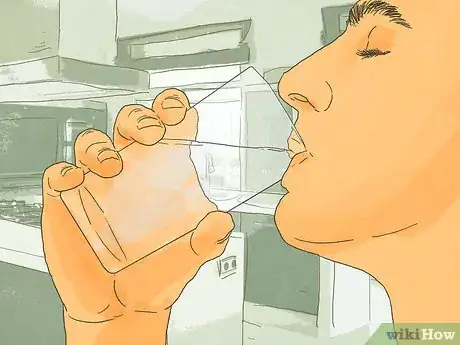


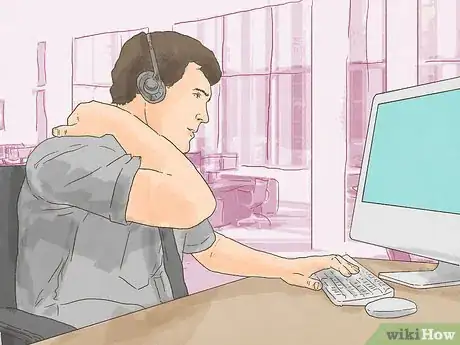

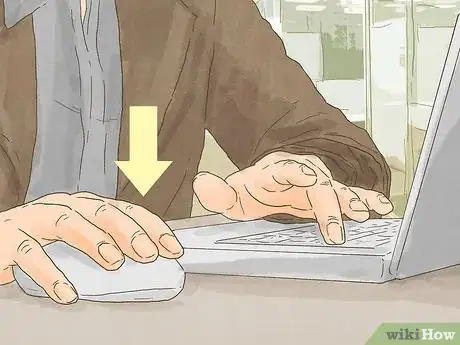
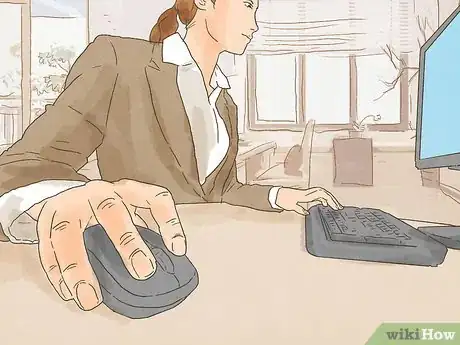







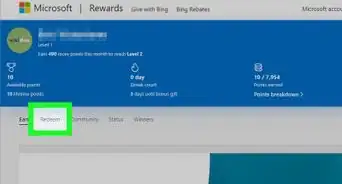
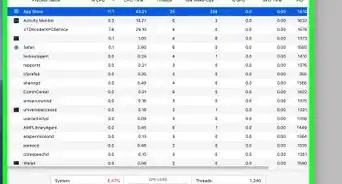
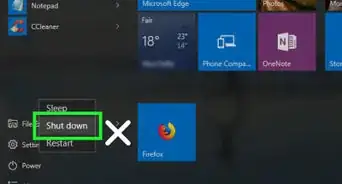


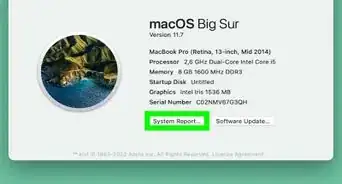
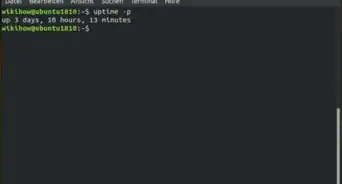


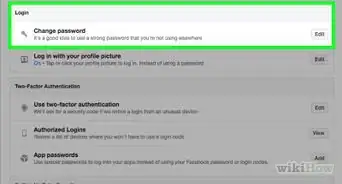
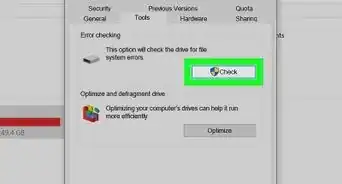

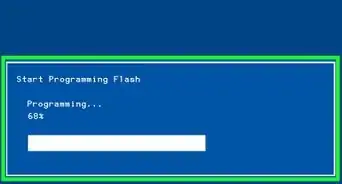











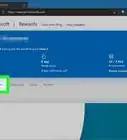

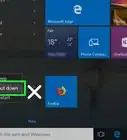




































Medical Disclaimer
The content of this article is not intended to be a substitute for professional medical advice, examination, diagnosis, or treatment. You should always contact your doctor or other qualified healthcare professional before starting, changing, or stopping any kind of health treatment.
Read More...